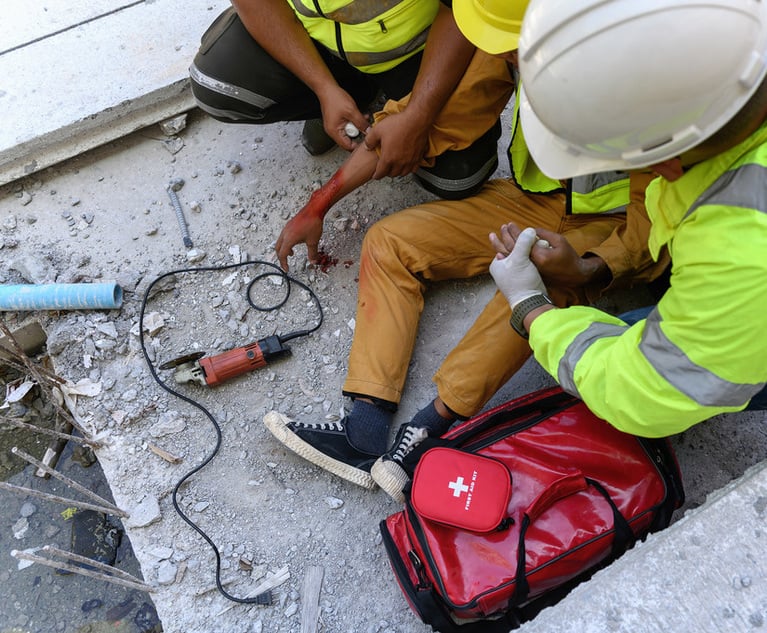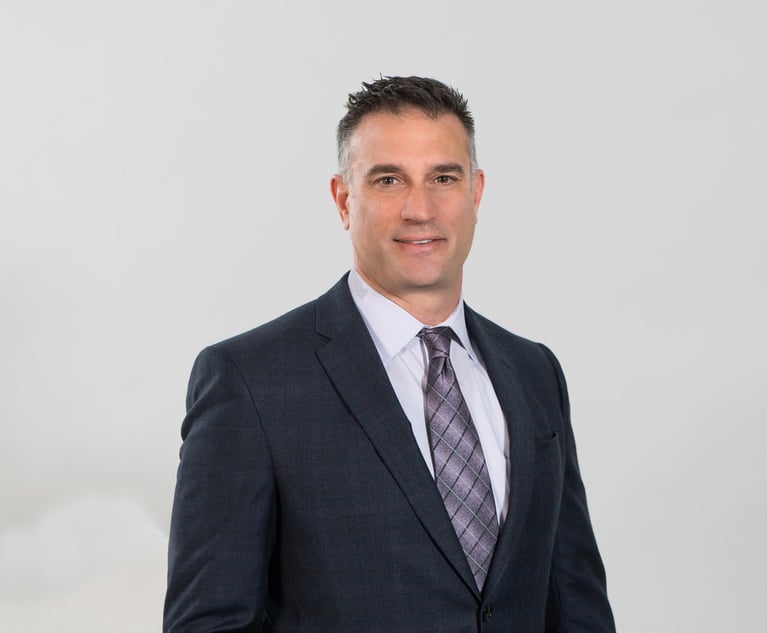'The Armed Citizen'
An armed citizen and hero could not prevent an enraged man from turning his rage into mass murder. Only sensible firearms law in a sane culture could do that. We have neither.
November 10, 2017 at 12:55 PM
7 minute read

The NRA magazine American Rifleman has a regular column called “The Armed Citizen,” which consists of “amazing stories which highlight accounts of law-abiding gun owners in America using their Second Amendment rights for self-defense” against robbers, rapists, burglars, and other assailants. American Rifleman doesn't have a similar column with accounts of spouses shooting one another, jealous lovers shooting their exes, alcohol-fueled shootings on Saturday night, workplace revenge massacres, or children accidentally shooting their playmates, but no matter. The NRA is an advocacy organization putting out the best side of its story of armed self-reliance.
The recent massacre at the First Baptist Church in Sutherland Springs, Texas, had a genuine armed citizen, who shows what the good guy with a gun can and cannot accomplish. We're not talking about the gunman, whose name we will not mention. We're talking about Stephen Willeford, a neighbor of the church, who heard the commotion, ran outside with his own rifle, and started shooting at the fleeing killer, who drove away. Willeford and another neighbor then gave chase. His shots wounded the fugitive twice, and the man crashed his car and then blew his brains out rather than face capture. Willeford is a genuine hero, who rightly read the situation and risked his life to protect his community. He is as good an example of an armed citizen as we are likely to find outside of Hollywood fiction. Without asking to be, he is a poster boy for the NRA's vision of an armed society. He is also a perfect illustration of its limits.
The gunman was a genuinely evil man full of rage. He spent a year in military prison after beating his first wife and her son so badly that he fractured the boy's skull. He was estranged from his second wife, not surprisingly, and had repeatedly threatened her mother with death. Yet he was somehow able to buy an assault rifle with detachable 30 round magazines for quick reloading. Even if his court martial conviction had been in the central records system, as it should have been, such weapons can be bought at gun shows without any waiting period for records review, and the floating supply is so ample that they can probably be acquired informally without much trouble.
The assault rifle allowed the gunman to shoot fast and straight at a church full of innocent worshipers and kill 26 of them, including 13 children. As a man who had grown up in rural Texas, he surely knew that a neighbor, a passerby, or even one of the congregation might have been armed and fought back, perhaps with an assault rifle of their own. That prospect deterred him not at all. Willeford's readiness and courage could intervene after the fact, but it could not prevent an enraged man from turning his rage into mass murder in the first place. Only sensible firearms law in a sane culture could do that. We have neither.
No doubt we will be told by doctrinaires, as they have told us before, that these massacres are the price of freedom to go armed, and that the answer is for good citizens to embrace that freedom and go armed ourselves to church, to school, to the movies and about our daily business. There was once a Scottish regiment, the Cameronians, who went armed to church and posted pairs of armed sentries at the four corners of the church at every service. They were recruited from a dissenting Christian sect that had been persecuted in the 17th century, and their tradition of posting sentries came from the illegal and secret services they held in the woods, swamps and fields before the Stuarts were overthrown. Apparently we must all become as wary as Cameronians now, or take our chances.

The NRA magazine American Rifleman has a regular column called “The Armed Citizen,” which consists of “amazing stories which highlight accounts of law-abiding gun owners in America using their Second Amendment rights for self-defense” against robbers, rapists, burglars, and other assailants. American Rifleman doesn't have a similar column with accounts of spouses shooting one another, jealous lovers shooting their exes, alcohol-fueled shootings on Saturday night, workplace revenge massacres, or children accidentally shooting their playmates, but no matter. The NRA is an advocacy organization putting out the best side of its story of armed self-reliance.
The recent massacre at the First Baptist Church in Sutherland Springs, Texas, had a genuine armed citizen, who shows what the good guy with a gun can and cannot accomplish. We're not talking about the gunman, whose name we will not mention. We're talking about Stephen Willeford, a neighbor of the church, who heard the commotion, ran outside with his own rifle, and started shooting at the fleeing killer, who drove away. Willeford and another neighbor then gave chase. His shots wounded the fugitive twice, and the man crashed his car and then blew his brains out rather than face capture. Willeford is a genuine hero, who rightly read the situation and risked his life to protect his community. He is as good an example of an armed citizen as we are likely to find outside of Hollywood fiction. Without asking to be, he is a poster boy for the NRA's vision of an armed society. He is also a perfect illustration of its limits.
The gunman was a genuinely evil man full of rage. He spent a year in military prison after beating his first wife and her son so badly that he fractured the boy's skull. He was estranged from his second wife, not surprisingly, and had repeatedly threatened her mother with death. Yet he was somehow able to buy an assault rifle with detachable 30 round magazines for quick reloading. Even if his court martial conviction had been in the central records system, as it should have been, such weapons can be bought at gun shows without any waiting period for records review, and the floating supply is so ample that they can probably be acquired informally without much trouble.
The assault rifle allowed the gunman to shoot fast and straight at a church full of innocent worshipers and kill 26 of them, including 13 children. As a man who had grown up in rural Texas, he surely knew that a neighbor, a passerby, or even one of the congregation might have been armed and fought back, perhaps with an assault rifle of their own. That prospect deterred him not at all. Willeford's readiness and courage could intervene after the fact, but it could not prevent an enraged man from turning his rage into mass murder in the first place. Only sensible firearms law in a sane culture could do that. We have neither.
No doubt we will be told by doctrinaires, as they have told us before, that these massacres are the price of freedom to go armed, and that the answer is for good citizens to embrace that freedom and go armed ourselves to church, to school, to the movies and about our daily business. There was once a Scottish regiment, the Cameronians, who went armed to church and posted pairs of armed sentries at the four corners of the church at every service. They were recruited from a dissenting Christian sect that had been persecuted in the 17th century, and their tradition of posting sentries came from the illegal and secret services they held in the woods, swamps and fields before the Stuarts were overthrown. Apparently we must all become as wary as Cameronians now, or take our chances.
This content has been archived. It is available through our partners, LexisNexis® and Bloomberg Law.
To view this content, please continue to their sites.
Not a Lexis Subscriber?
Subscribe Now
Not a Bloomberg Law Subscriber?
Subscribe Now
NOT FOR REPRINT
© 2025 ALM Global, LLC, All Rights Reserved. Request academic re-use from www.copyright.com. All other uses, submit a request to [email protected]. For more information visit Asset & Logo Licensing.
You Might Like
View All
Neighboring States Have Either Passed or Proposed Climate Superfund Laws—Is Pennsylvania Next?
7 minute read

Trending Stories
- 1MoFo Associate Sees a Familiar Face During Her First Appellate Argument: Justice Breyer
- 2Antitrust in Trump 2.0: Expect Gap Filling from State Attorneys General
- 3People in the News—Jan. 22, 2025—Knox McLaughlin, Saxton & Stump
- 4How I Made Office Managing Partner: 'Be Open to Opportunities, Ready to Seize Them When They Arise,' Says Lara Shortz of Michelman & Robinson
- 5The Intersection of Labor Law and Politics Following the Presidential Election
Who Got The Work
J. Brugh Lower of Gibbons has entered an appearance for industrial equipment supplier Devco Corporation in a pending trademark infringement lawsuit. The suit, accusing the defendant of selling knock-off Graco products, was filed Dec. 18 in New Jersey District Court by Rivkin Radler on behalf of Graco Inc. and Graco Minnesota. The case, assigned to U.S. District Judge Zahid N. Quraishi, is 3:24-cv-11294, Graco Inc. et al v. Devco Corporation.
Who Got The Work
Rebecca Maller-Stein and Kent A. Yalowitz of Arnold & Porter Kaye Scholer have entered their appearances for Hanaco Venture Capital and its executives, Lior Prosor and David Frankel, in a pending securities lawsuit. The action, filed on Dec. 24 in New York Southern District Court by Zell, Aron & Co. on behalf of Goldeneye Advisors, accuses the defendants of negligently and fraudulently managing the plaintiff's $1 million investment. The case, assigned to U.S. District Judge Vernon S. Broderick, is 1:24-cv-09918, Goldeneye Advisors, LLC v. Hanaco Venture Capital, Ltd. et al.
Who Got The Work
Attorneys from A&O Shearman has stepped in as defense counsel for Toronto-Dominion Bank and other defendants in a pending securities class action. The suit, filed Dec. 11 in New York Southern District Court by Bleichmar Fonti & Auld, accuses the defendants of concealing the bank's 'pervasive' deficiencies in regards to its compliance with the Bank Secrecy Act and the quality of its anti-money laundering controls. The case, assigned to U.S. District Judge Arun Subramanian, is 1:24-cv-09445, Gonzalez v. The Toronto-Dominion Bank et al.
Who Got The Work
Crown Castle International, a Pennsylvania company providing shared communications infrastructure, has turned to Luke D. Wolf of Gordon Rees Scully Mansukhani to fend off a pending breach-of-contract lawsuit. The court action, filed Nov. 25 in Michigan Eastern District Court by Hooper Hathaway PC on behalf of The Town Residences LLC, accuses Crown Castle of failing to transfer approximately $30,000 in utility payments from T-Mobile in breach of a roof-top lease and assignment agreement. The case, assigned to U.S. District Judge Susan K. Declercq, is 2:24-cv-13131, The Town Residences LLC v. T-Mobile US, Inc. et al.
Who Got The Work
Wilfred P. Coronato and Daniel M. Schwartz of McCarter & English have stepped in as defense counsel to Electrolux Home Products Inc. in a pending product liability lawsuit. The court action, filed Nov. 26 in New York Eastern District Court by Poulos Lopiccolo PC and Nagel Rice LLP on behalf of David Stern, alleges that the defendant's refrigerators’ drawers and shelving repeatedly break and fall apart within months after purchase. The case, assigned to U.S. District Judge Joan M. Azrack, is 2:24-cv-08204, Stern v. Electrolux Home Products, Inc.
Featured Firms
Law Offices of Gary Martin Hays & Associates, P.C.
(470) 294-1674
Law Offices of Mark E. Salomone
(857) 444-6468
Smith & Hassler
(713) 739-1250







